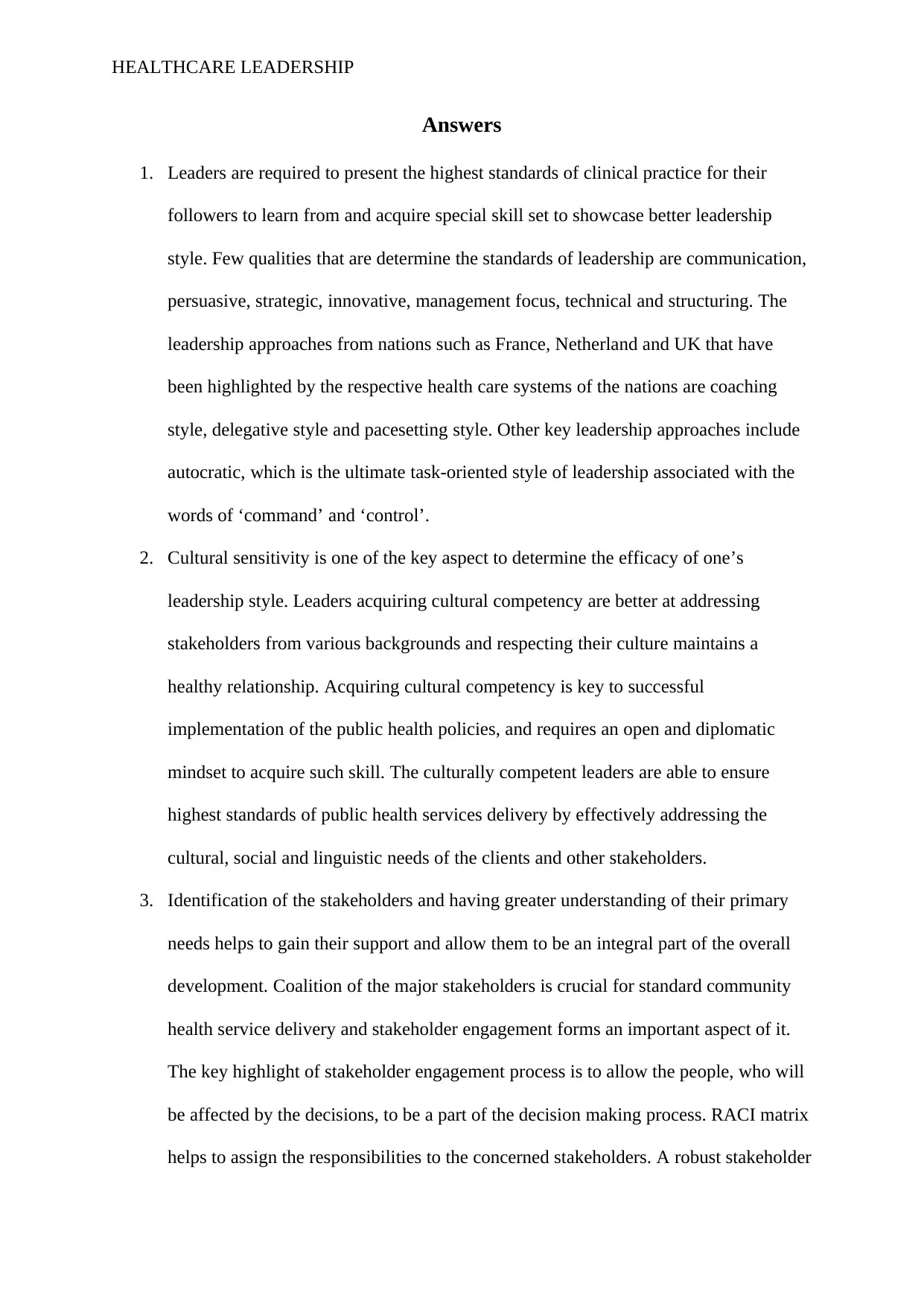Healthcare Leadership Competencies: A Comprehensive Report
VerifiedAdded on 2022/09/05
|3
|555
|20
Report
AI Summary
This report discusses essential healthcare leadership competencies, synthesizing best practices and comparing leadership approaches from various nations. It emphasizes the importance of cultural sensitivity in designing and implementing public health policies, highlighting the need for leaders to address diverse backgrounds and cultural values. The report outlines strategies for identifying stakeholders, building coalitions, and implementing robust stakeholder management plans, including the use of RACI matrices. It also explores the application of administrative and health information technology for developing process and performance improvement plans, as well as the organization, structure, and function of healthcare, public health, and regulatory systems. The report underscores the significance of quality improvement plans in healthcare settings, the role of health information technology in enhancing efficiency and patient outcomes, and the impact of institutional arrangements in improving public health services. The coordination between the World Health Organization and International Health Regulations in shaping global public health regulatory systems is also discussed.
1 out of 3










![[object Object]](/_next/static/media/star-bottom.7253800d.svg)